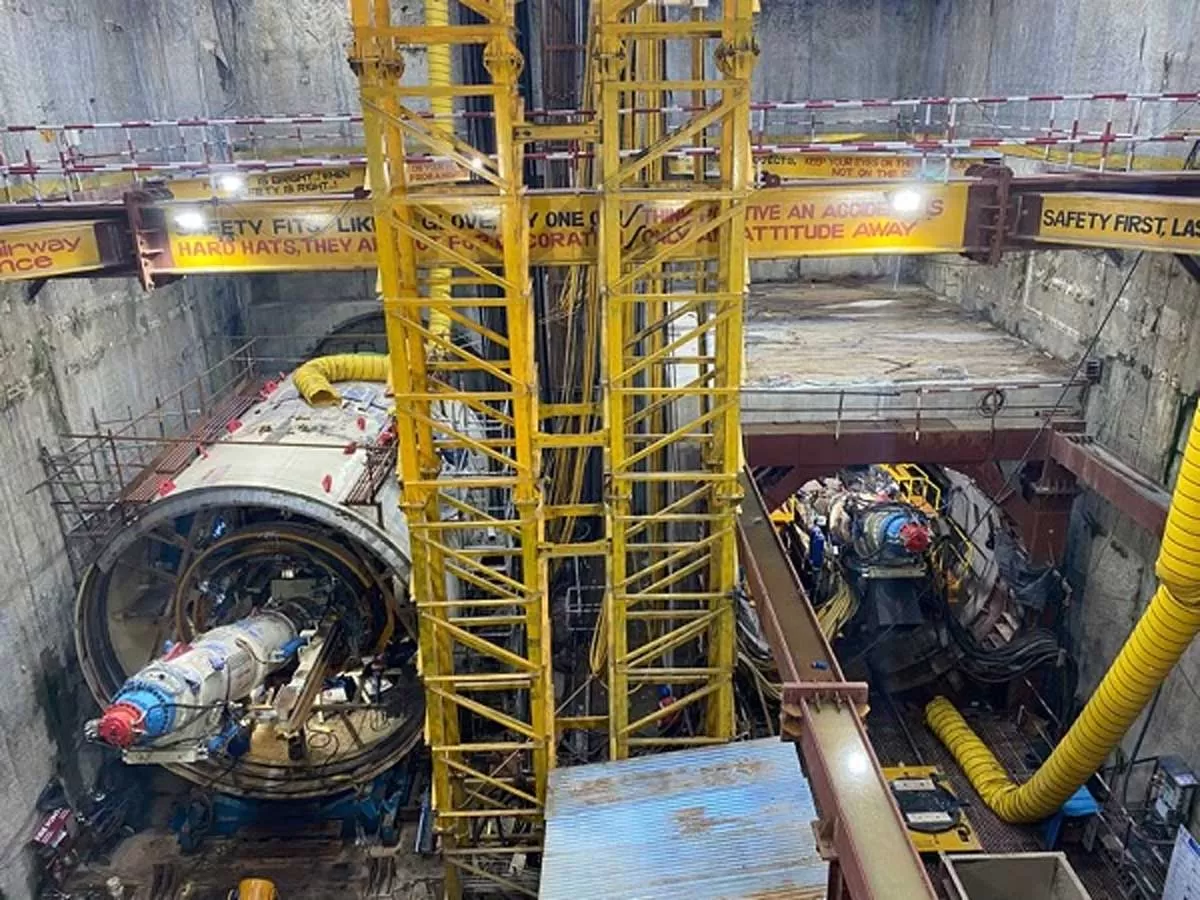SUBODH CHANDRA DIXIT tells us how advanced construction technologies can steer the industry towards recovery. The severe impact of the COVID-19 pandemic on the Indian construction industry is well-known. It began with the nationwide lockdown, work stoppages and the reverse migration of construction workers. Even after the lockdown relaxation, the industry is grappling with slow progress, shortage of workers, disrupted supply chains, poor productivity, increasing costs, new operating procedures for health and hygiene and cashflow crunches.Even before COVID, engineering and construction (E&C) companies were battling with poor productivity, operational challenges, project delays, tighter margins and increased competition. The pandemic has only accentuated the systemic hurdles the industry was facing all along. In the post-COVID era, E&C companies will be under greater pressure to improve costs, timelines and efficiency.It is with this background that E&C companies need to look at advanced construction technologies as preferred solutions for overcoming the challenges posed by the pandemic. This has also become imperative to address the needs of the large and complex projects—both public and private—being planned in India. Moreover, technology has become necessary to achieve consistency, repeatability, scalability, predictability and traceability.While a few organisations have been at the forefront of adoption of advanced construction technologies, the rest of the industry has been slow to adapt to new methods of construction or technology. Although there have been many projects with successful demonstrations of advanced construction technologies in India, most projects are still being built using conventional methods. Therefore, there is tremendous scope for the productivity and efficiency standards of the industry to go up. Excepting government organisations, PSUs, MNCs and some corporates who have adopted Design Build contracts in a big way, a majority of project promoters and developers still prefer traditional sourcing models for their construction needs. Many projects experience poor cashflow and hence poor progress on account of delayed payments, onerous clauses in contracts, inadequate funding arrangements, poor dispute resolution mechanisms and lopsided competition. These are proving to be barriers to innovation and adoption of new construction technologies. The evolving landscape of new technologies in the E&C sector has the potential to transform all stages of the project delivery process. These technologies can change how companies design, plan and execute projects. By adopting advanced software, construction-focused hardware, analytics capabilities and advanced construction technologies, companies can eliminate many of the problems that have dogged the E&C sector for decades. Technology could also enhance performance on the parameters of time, cost, quality, precision and convenience.Digital technologies Shapoorji Pallonji (SP) E&C has begun incorporating new construction technologies into its projects, across all project phases: design, preconstruction, construction, and operations and management. The various digital initiatives being implemented include:1. SPACE: This is the digital portal of SP E&C and offers various applications like HSE and Quality to record and track all internal check processes Labour Management System to record all labour data including attendance and compliance Action Module to organise meetings and assign tasks to individuals Knowledge Management portal to share case studies, articles, news feed, e-books, etc.2. BIM implementation: At SP E&C, virtual design and construction has been implemented across 100+ projects for modelling, clash-free design coordination, RFI production/resolution, quantification, scheduling and monitoring, and site logistics. We are leveraging BIM capabilities using multiple tools from leading digital tool suppliers. 3. Use of drones and cameras: We are using drones to capture site images and aerial survey data. We are also using PTZ cameras to monitor progress and improve safety and security. 4. Back-office integration on SAP: We are accessing and utilising valuable project data on resources, finances, costs and schedules on SAP. The system gives our managers immediate access to real-time back-office data and aids decision making. Advanced construction methods and techniquesWhile digital technologies have an important role to play in modernising the construction industry, it is equally important that innovations be applied to the most important step in the value chain: construction techniques. In recent years, many advanced plant and equipment, formwork systems and power tools have become easily available in India. This means engineers have a wide choice and can adopt a customised approach to equipment selection for mitigating specific challenges or to meet project needs. The sophisticated power-driven hand tools that are now easily available are force-multipliers and can enhance productivity manifold while reducing labour requirement. With growing demand for faster construction and world-class quality, the ideas and technologies becoming imperative for smooth project execution include: Modular construction; standardisation Pre-engineered and site-assembled constructionMechanised constructionFaster construction methodologiesHomogeneous quality of materials and workmanshipCost-effective constructionHigh-rise constructionModular constructionBeyond 2D precast panels, emerging technologies in precast construction that enable the manufacture of the whole dwelling unit as a monolithic module (with no joints) and complete with interior finishes are a credible option. Modular construction technologies are suitable for the Indian environment. However, modular construction comes with some unique challenges. Thankfully, most of these can be mitigated through active collaboration among project stakeholders. Modular construction requires intensive pre-project planning and engineering. Along with the module design and joints details, planning is must when incorporating MEP and other building systems within a module. Planners need to focus on how the modules will be lifted, transported, placed and assembled together to form the building. The use of BIM can greatly help visualise the design and plan for the construction sequence. Project promoters need to modify their risk-mitigation strategies and conventional procurement systems to accommodate the unique challenges posed by modular construction and the need for higher capital expenditure vis-à-vis conventional construction. The capital expenditure is mainly towards setting up pre-casting facilities and higher capacity cranes for erection. For large projects, onsite or near-site manufacturing of modules can be explored to reduce transportation costs. The progress payment process should allow for payments towards the offsite manufactured items and the remaining after the modules are erected in position. The stakeholders can mutually agree to secure the appropriate insurances to suit offsite construction. E&C companies need to train designers and engineers to address modular construction. Knowledge and experience can be acquired through training, technological tie-ups and project experience. Modular systems are most suitable for projects and, thereby, clients who are clear about their needs and not anticipating any design changes during construction. Such clients exercise a lot of care and planning prior to design finalisations and approval and resist the urge to make design changes during the construction phase. Designers and contractors could use BIM at the concept stage and give clients a better perspective of what they are likely to get as a final product and changes can be visualised and informed decisions made. Clients also need to understand that modular construction proves cost-efficient only with optimum use of moulds, resulting in mass production with a lower degree of variation.Indian E&C companies are now able to access these advanced technologies through global technology providers who are only too keen to support this demand. Similarly, the plant and machinery associated with modular construction can be easily imported into India at competitive prices. Project promoters and stakeholders can design and build various types of projects using modular construction. This will lead to faster deliveries and project success.Monolithic concrete constructionAdoption of advanced technologies such as monolithic concrete construction (shear wall technology) using aluminium formwork has been successfully demonstrated in India and, going forward, can become the norm for large projects. A high degree of modularity of designs that ensures a higher repetition of formwork and higher productivity of mobilised resources is a definite advantage.Pre-engineered structural steel construction Office building construction in India can adopt pre-engineered (PE) structural steel building systems in a big way to overcome the challenges posed by the RCC way of design and construction.The use of PE steel results in an accelerated schedule owing to reduced onsite time. Construction quality is enhanced because of offsite fabrication. 3-D interoperability and BIM allow close cooperation between designers and contractors in the design, fabrication and erection of steel structures. 3D printingSP E&C has partnered with a European start-up to implement 3D printing in India. The partnership comprises technical collaboration between the two companies to design a midrise structure as per IS codes and ultimately print the same on ground. The design would ensure structural compliance and qualitative aspects of the design concrete mix.RoboticsSP E&C has been continuously exploring such methods and has already tested and implemented the use of plastering machines on a few projects. Second, it has also partnered with an Indian company to manufacture masonry robots for its projects. This partnership too is a technical collaboration where the robot is exclusively fabricated for SP E&C projects and comes with software to read and process the construction drawings and automatically lift and place construction blocks to lay the wall with minimal human interference.The way forwardE&C companies need to adopt various tools for use across the project lifecycle, ranging from design management and scheduling to safety monitoring, field management and performance management. New materials, building systems and methods of construction along with emerging project management trends have the potential to change the way large projects will be delivered. In addition, project promoters and developers need to consciously plan for projects to suit adoption of advanced construction technologies to realise the benefits these have to offer. Also, budgeting and sourcing models must accommodate the need for higher capex and smooth cashflow that are necessary while using such methods. This will ensure a seamless project delivery experience.The greater interest and investment in new technologies also needs to be matched with an industry-wide commitment to change. E&C companies will need to alter fundamental aspects of their organisational structure, corporate culture and IT systems, with the goal of seamlessly integrating new tools into daily work. With this support, their new tools will give them an edge that no amount of human effort can replicate. The COVID-19 pandemic has offered a golden opportunity to Indian E&C companies to modernise their operations and thereby the entire industry. Let us lead the change.About the author: Subodh Chandra Dixit, Executive Director - Engineering & Construction, Shapoorji Pallonji and Company Pvt Ltd (SPCPL), oversees the day-to-day management of the organisation, including business development and strategic planning. He has broad and diversified experience of over 31 years in the construction industry. He joined SPCPL in 1996 and has held several senior positions, including executive vice-president, director – operations, and president (construction group). Under his leadership, the company has witnessed over 20 per cent growth year on year, for the past many years. He is also a Director on the SPCPL Board and board member of other SP group companies.


















